Here's one way of solving it using dynamic programming:
Assume we have the number d0 d1 ... dN as input.
The idea is to create a table, where cell (i, j) store the product di · di+1 · ... · dj. This can be done efficiently since the cell at (i, j) can be computed by multiplying the number at (i-1, j) by di.
Since i (the start index) must be less than or equal to j (the end index), we'll focus on the lower left triangle of the table.
After generating the table, we check for duplicate entries.
Here's a concrete example solution for input 2673:
We allocate a matrix, M, with dimensions 4 × 4.

We start by filling in the diagonals, Mi,i with di:

We then go row by row, and fill in Mi,j with di ·Mi-1,j

The result looks like

To check for duplicates, we collect the products (2, 12, 6, 84, 42, 7, 252, 126, 21, 3), sort them (2, 3, 6, 7, 12, 21, 42, 84, 126, 252), and loop through to see if two consecutive numbers are equal. If so we return false, otherwise true.
In Java code:
Here's a working DP solution, O(n2).
public static boolean isColorful(int num) {
// Some initialization
String str = "" + num;
int[] digits = new int[str.length()];
for (int i = 0; i < str.length(); i++)
digits[i] = str.charAt(i) - '0';
int[][] dpmatrix = new int[str.length()][str.length()];
// Fill in diagonal: O(N)
for (int i = 0; i < digits.length; i++)
dpmatrix[i][i] = digits[i];
// Fill in lower left triangle: O(N^2)
for (int i = 0; i < str.length(); i++)
for (int j = 0; j < i; j++)
dpmatrix[i][j] = digits[i] * dpmatrix[i-1][j];
// Check for dups: O(N^2)
int[] nums = new int[digits.length * (digits.length+1) / 2];
for (int i = 0, j = 0; i < digits.length; i++, j += i)
System.arraycopy(dpmatrix[i], 0, nums, j, i+1);
Arrays.sort(nums);
for (int i = 0; i < nums.length - 1; i++)
if (nums[i] == nums[i+1])
return false;
return true;
}
For DP-interested readers I can recommend the somewhat similar question/answer over here:



